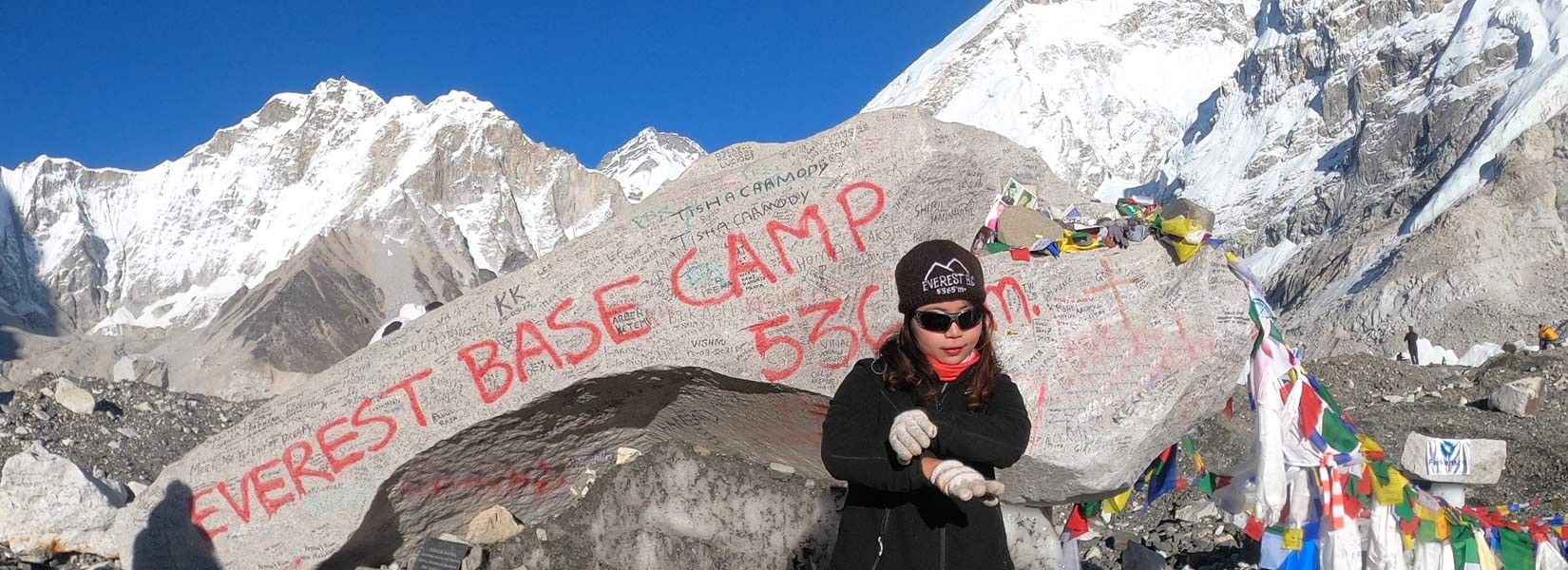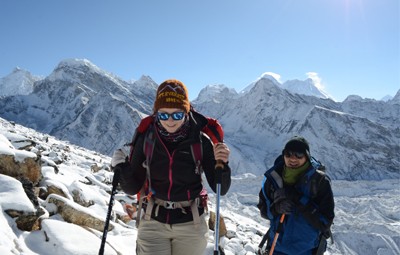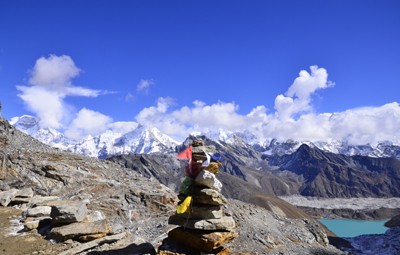What is the Everest 3 Pass Trek?
For those with experience who are looking for a more challenging trip than the popular Everest Base Camp trip, the Everest 3 Passes Trek with Everest Base Camp is calling. Three high mountain passes—Kongma-La, Cho-La, and Renjo-La—that are over 17,500 feet in height are traversed on this amazing circuit-style trip. The hike gives amazing views of the highest peaks in the world and is tucked away in Nepal's Sagarmatha (Everest) area.
The journey doesn't end there, though. A detour to Everest Base Camp, a fabled staging area for expeditions seeking to scale Mount Everest, is included in the Everest 3 Passes Trek itinerary. The camp comes alive with hundreds of tents teeming with climbers gearing up for their summit assault in April and May, peak season.
For experienced hikers only, the Everest 3 Passes Trek is an incredible adventure. Unmatched mountain views, cultural immersion, and the opportunity to discover one of the planet's most fabled alpine regions are all promised. The journey can be expanded to include detours to other amazing places for those looking for more adventure, such asIsland Peak climbing and Lobuche Peak climbing. The on-the-go plan covers Ama Dablam Base Camp. The total distance of the Everest Three High Pass Trek is about 115 km from Lukla to Lukla.
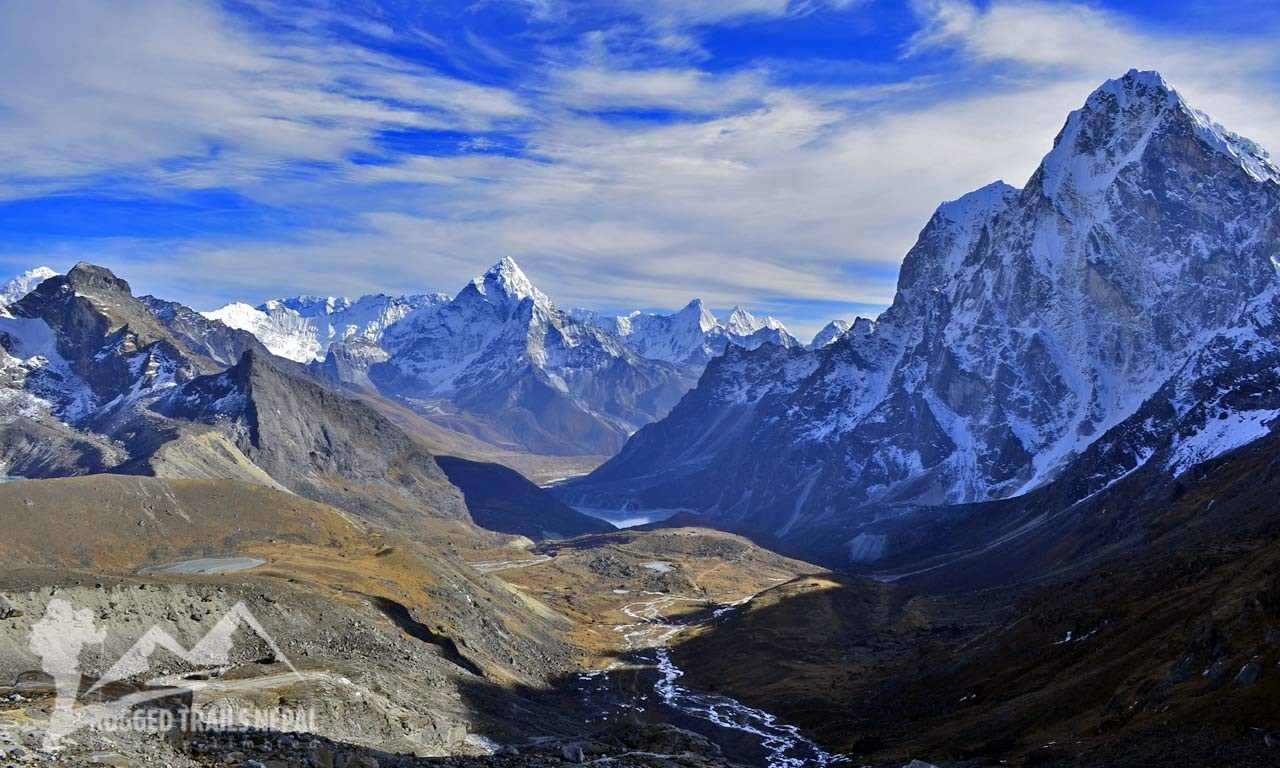
The Best View Point on the Three High Pass Everest Base Camp Trek
- Namche Everest View hotel at 3880 m (12,729 ft)
- Renjo La Pass at 5345 m (17,536 ft)
- Gokyo Ri at 5,357 m (17,575 ft)
- Cho La Pass at 5,420 m (17,782 ft)
- Kala Patthar viewpoint at 5,643 m (8,514 ft)
- KongMa La Pass at 5,550 m (18,209 ft)
You can watch our Everest three-pass trek video, where we have mentioned all the great passes and viewpoints.
It is possible to finish the Everest 3 Passes Trek in as little as 17 days, although this will mostly depend on how quickly you need to acclimatise and how many side trips you decide to take. Our set trek package is for 20 days, including international arrival, Kathmandu stay, and departure.
Accept the trip and appreciate the experience.
It's not a race. Give it some time! There are a tonne of base camps, side trips, and climbs to explore in the Everest region. Make the most of your time there and take it all in.
Altitude is important.
Recall that the walk passes through several high-altitude areas. Acclimatisation is essential for a risk-free and pleasurable experience. You may be able to travel a little bit faster if you have done a high-altitude trek such as the Annapurna Circuit or Manaslu Circuit. Again, though, why hurry? Embrace the beauty and difficulties that this one-of-a-kind journey presents.
How physically fit must I be for the Everest Three High Pass with EBC Trek?
Although the Everest 3 Passes Trek is difficult, it is not impossible to complete without superhuman athletic ability. But having a solid foundation of fitness is crucial.
Here's something to think about:
- Endurance: Get ready for four to seven-hour hikes every day for two to three weeks
- Strength: It takes strength in the legs and core to carry a daypack, even a little one, for extended periods of time.
- Physician's Clearance: Make an appointment with your physician to make sure you are well enough to go high-altitude hiking.
Porters: reduce your burden; boost your enjoyment. A porter will accompany you on your journey to handle your primary backpack. This allows you to concentrate on taking in the view and organising your daypack. It helps the regional economy as well.
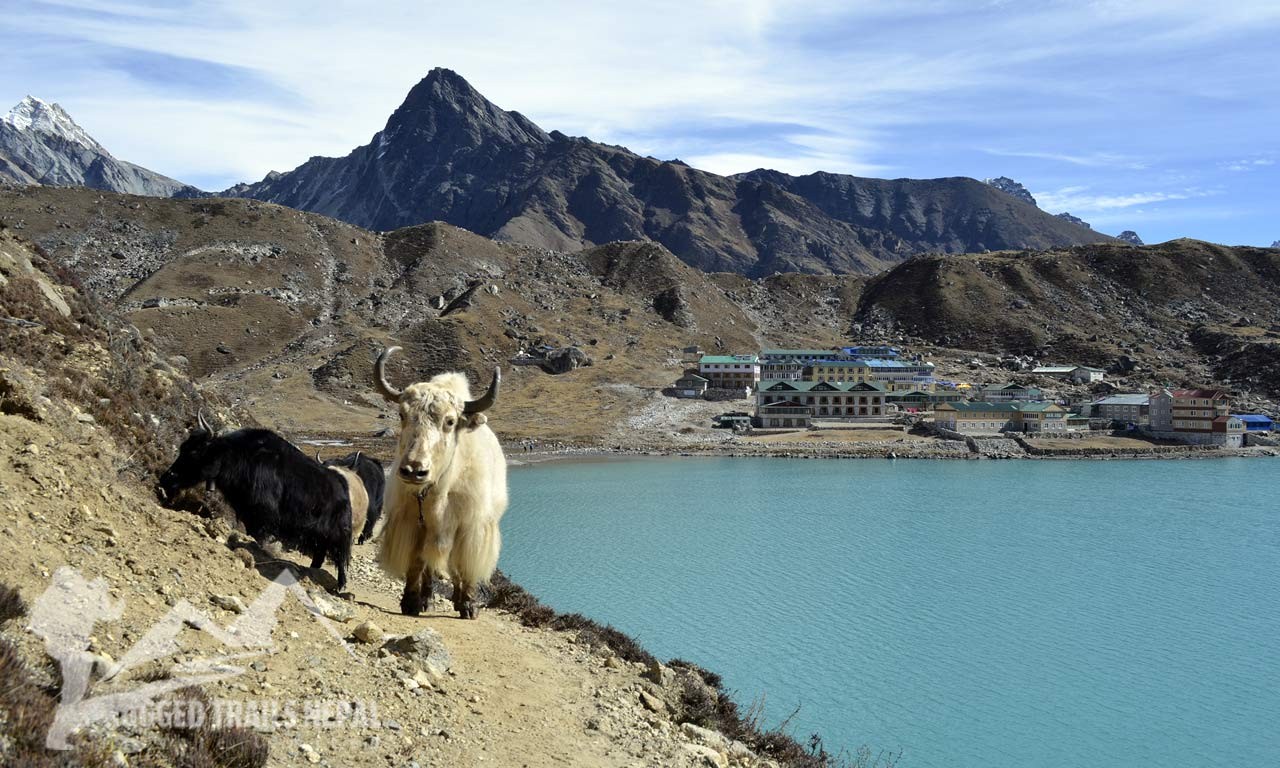
How does your itinerary help my body adapt to the altitude better than others?
Our acclimatization strategy is proactive and scientifically designed for your safety and success. We adhere to the mountaineering gold standard of "climb high, sleep low." This means on dedicated acclimatization days in key locations like Namche Bazaar and Gokyo Valley, we don't just rest. Instead, we embark on active side hikes to higher elevations. This process is crucial as it stimulates your body's physiological adaptation to altitude. By exposing yourself to a higher elevation and then descending to sleep at a lower one, you significantly improve your acclimatization, making the journey across the high passes safer and more enjoyable.
Nights without sleep and high altitudes:
Prepare yourself for sleeping at elevations of 4,270 metres (14,000 feet) for at least a week. Your highest sleeping spot will be Gorak Shep, at 5,160 metres (16,929 ft).
Diamox for Everest Trek: Altitude sickness can be prevented and treated with the help of medicines called Diamox. Before your walk, discuss this option with your physician. The guides will carry Diamox, but after consulting your doctor, you can bring it from home.
When is the best time to hike the Everest 3 Passes Trek with Everest Base Camp?
October and November
Widely considered the prime trekking season, these months offer pleasant days, cool nights, and clear skies. While the classic Nepal Everest Base Camp trek will be busier, it provides a chance to interact with fellow trekkers and climbers. However, expect colder temperatures in the higher camps as December approaches.
April and May
The second most popular season boasts clear skies and the exciting opportunity to witness Everest climbers preparing for their summit attempts.
Winter (December–March)
While winter offers stunningly clear skies, the extreme cold and potential snowfall can close high passes, making trekking risky. The 3 High Pass trek's complete circuit might not be possible during this trek, but again, it's worth hiking with the experienced Sherpa guides.
Monsoon Season (June-September)
While some bloggers might downplay the monsoon season, it offers a unique and rewarding experience for the Mount Everest Three High Pass Trek. Yes, there can be flight delays and cancellations from Lukla due to rain, but landslides are typically not a major concern.
Here's the beauty of the monsoon
- Lush Landscapes: Unlike the dry season, the mountains come alive with vibrant greenery.
- Dramatic Cloud Formations: Witness clouds dance beneath the majestic Himalayas, creating a truly awe-inspiring scene.
- Cascading Waterfalls: The increased rainfall brings cascading waterfalls to life, adding another dimension to the scenery.
- Blooming Wildflowers: Witness a vibrant display of colourful wildflowers, a sight exclusive to the monsoon season.
Imagine capturing these breathtaking landscapes in photographs: snow-capped peaks framed by lush greenery and adorned with colourful wildflowers. The monsoon offers a unique and unforgettable perspective on the Three High Pass Trek.
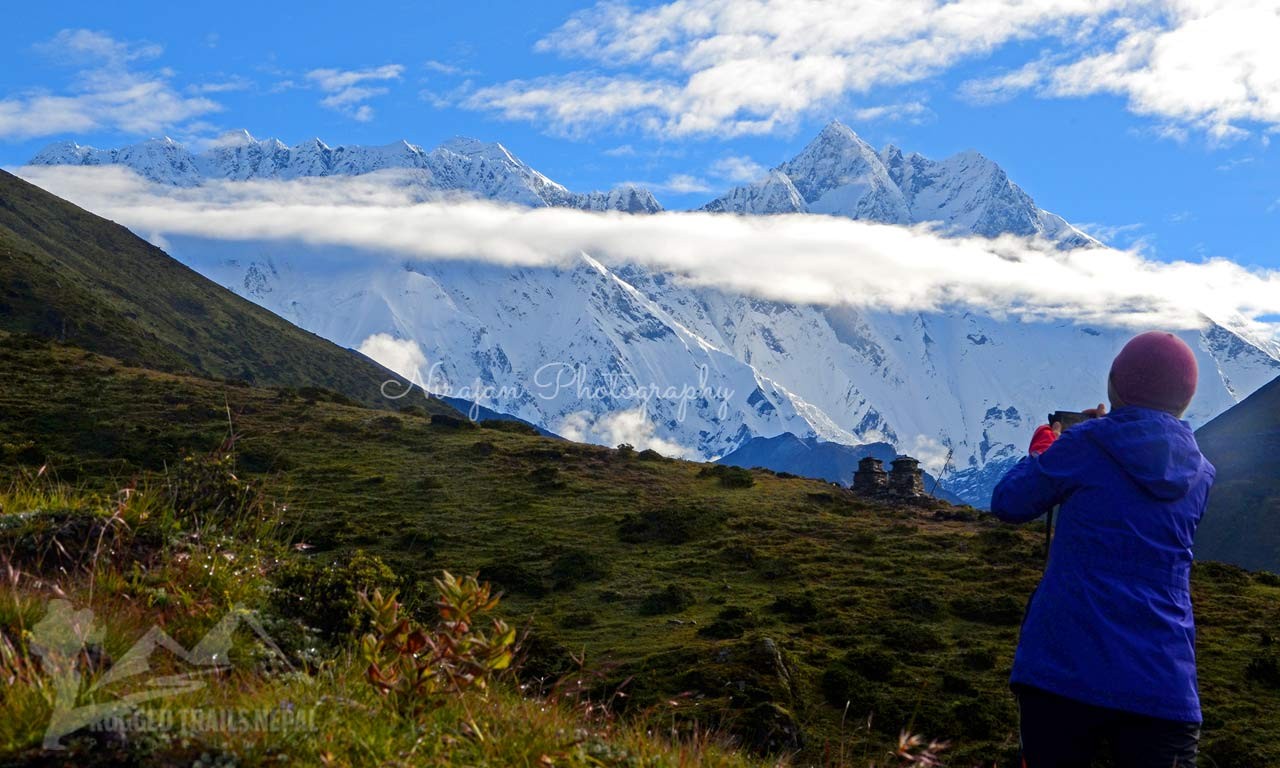
How do I get there and back?
The ideal starting point depends on your preferences. Flights offer a quicker start, while the road option provides a more traditional trekking experience. Helicopters provide the ultimate convenience, especially for those with limited time or facing potential flight disruptions.
By Flight
Kathmandu Airport: This is the most common starting point. Spend 1-2 nights in Kathmandu before flying to Lukla. During peak season, flights might operate from Manthali Airport instead. Upon arrival in Lukla, you'll disembark, walk through town, and begin your trek! After completing the trek (including Everest Base Camp), you'll fly back from Lukla Airport.
By Road
Jiri or Shivalaya: This option offers an alternative start point for the 3 High Pass Trek via a classic trekking route to Everest Base Camp, also known as the Hillary Route. Expect longer trekking days compared to the flight option.
By Helicopter
Kathmandu to Lukla: This luxurious option allows you to fly directly from Kathmandu to Lukla, bypassing the Lukla flight limitations. It's a popular choice, especially when combined with a helicopter return trip from Everest Base Camp, particularly if weather conditions hinder Lukla flights.
Do I need a trekking permit for the Everest 3 Pass Trek?
Leave the Permits to Us: Hassle-Free Trekking When you book your complete 3 High Pass Trek package with a reputable trekking company, you won't need to worry about permits or checkpoints. Your Sherpa guide will handle everything for a smooth and stress-free experience.
Solo Travellers: While solo travellers can obtain permits at Lukla or Monjo, booking with a trekking company ensures permit acquisition and eliminates unnecessary hassle.
How much Extra money do I need for the Everest 3 Passes Trek?
The good news is that most things are covered in your Everest 3 Passes Trek cost:
- Accommodation: 3 nights in Kathmandu with breakfast
- Transportation: Lukla flight tickets
- Meals: Breakfast, lunch, and dinner during the trek
Here's a breakdown of what's typically not included and your estimated daily spending:
Personal Expenses:
- Hot drinks, cold drinks, and other beverages
- Showers (may have a small fee at some lodges)
- Souvenirs and shopping
- Tipping (optional, but customary)
Plan on a maximum of USD $30 per day for these extras. This covers bottled water, tea/coffee, showers, and occasional Wi-Fi access.
Additional Tips:
- Mobile Connectivity: Purchase an NCELL or NTC eSIM card in Kathmandu for 4G network access.
- Power: Consider bringing a solar charger or power bank to keep your devices charged.
- Essentials: Pack wet wipes, toilet paper, and hiking snacks for convenience.
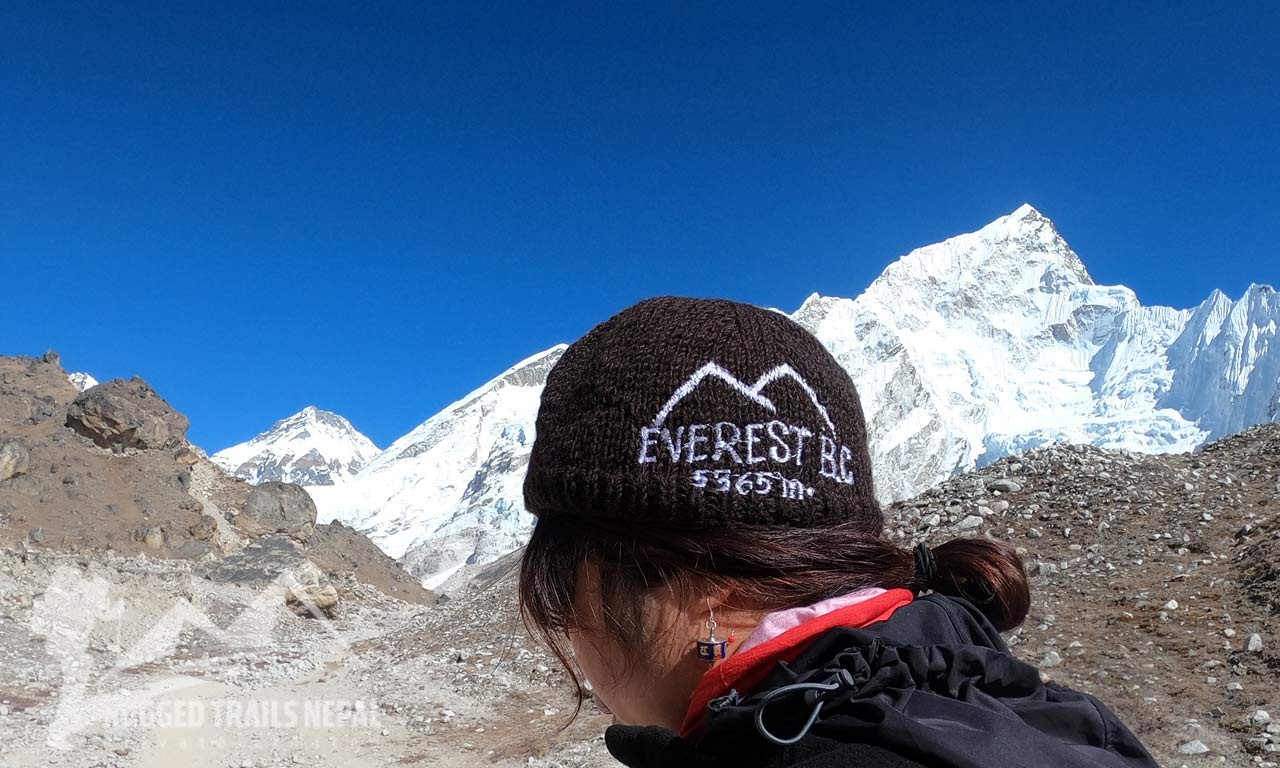
What are the teahouses like on the Everest 3 Passes Trek?
The teahouses, or lodges, on the Everest 3 Passes Trek offer a surprisingly comfortable and authentic sanctuary amidst the Himalayas. While accommodation is generally basic and functional, the level of comfort has notably increased, with updated, luxury-style lodges available in key hubs like Namche Bazaar, Dingboche, Tengboche, Gokyo, and Lobuche. You can expect simple twin or triple-share rooms with provided bedding, though bringing your own sleeping bag is highly recommended for extra warmth and hygiene. While shared bathrooms are common, many lodges now boast en-suite rooms with Western toilets, particularly at lower altitudes. For an additional cost, amenities like electric blankets are also becoming more accessible to ensure a warm night's rest. Overall, these teahouses provide everything a trekker needs—a warm bed, hot meals, and incredible camaraderie—after a long day on the trail.
How about the food on the Three Pass Trek and EBC?
The food on the Everest base camp three-pass trek can be a bit repetitive, but it's come a long way! Generally well-seasoned, you'll find a variety of options, from classic rice and lentil dishes, momos, to yak steaks and even burgers.
Thirst-quenchers and Treats:
Beer and soda are widely available, though be prepared for higher prices compared to lower altitudes. Snacks like cookies and candy bars follow the same trend; expect to pay more the further you trek.
Do I need to pack my own food?
While you won't need to bring your own, many trekkers find packing their own daily snacks a good idea. Mention if you have any allergies to some kinds of food items. Teahouses along the route are happy to provide hot meals, offering a variety of choices.
What about the drinking water during the 3 pass trek?
Hydration Essentials: Drinking tap water in Nepal is not recommended without proper treatment. Here are your two main options for staying hydrated on the Everest 3 Passes Trek:
Bottled Water: This is a convenient option, but be prepared for price variations. Expect to pay between $1 and $3 USD for the same bottle in more remote areas. The higher cost reflects the transportation challenges; supplies are often carried by porters, yaks, or even helicopters.
Water Purification:
- Boiled Water: Carry reusable bottles and boil water whenever possible. This is the most economical option, but requires planning and access to fuel.
- Purification Tablets: Consider using purification tablets to treat water from streams or taps. These tablets kill harmful bacteria and viruses.
Staying Hydrated:
Remember, proper hydration is crucial during high-altitude treks. Aim to drink a minimum of 4 litres of water per day, adjusting for your individual needs and exertion level.
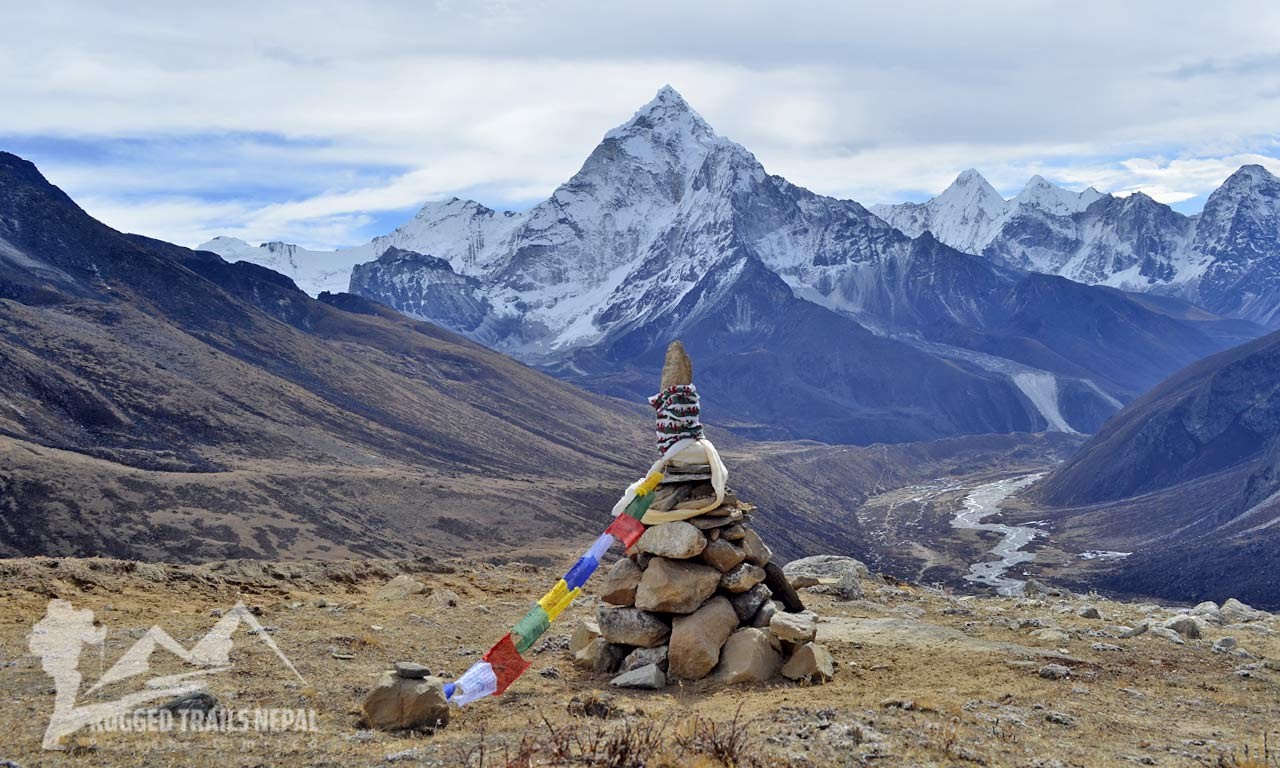
Wrapping Up Your Everest 3 Passes Trek Adventure
The Everest 3 Passes Trek with Everest Base Camp Trek in Nepal (also known as the Everest 3 High Pass Trek or Three Passes Trek) is an unforgettable challenge for seasoned trekkers. It's a demanding yet rewarding experience that surpasses the well-known Nepal Everest Base Camp Trek. This spectacular circuit-style hike traverses three high mountain passes (Kongma-La, Cho-La, and Renjo-La) exceeding a staggering 17,500 feet in elevation.
Planning Your Everest 3-Pass Trek
- Costs: The Three Passes Trek cost varies depending on factors like group size, itinerary choices, and desired amenities. Budget for the trek itself, international flights, potential side trips (like Island Peak), and additional expenses like food, drinks, and gratuities.
- Difficulty: While not for the faint of heart, the 3 Passes Trek's difficulty is often debated. Proper fitness and acclimatization are crucial. Consider your experience level before embarking on this challenging adventure.
Choosing Your Itinerary:
Clockwise vs. counter-clockwise: The clockwise direction is generally recommended for the Everest 3 Passes Trek, allowing for a more gradual ascent and better acclimatisation.
Considering Side Trips:
Island Peak: For truly adventurous climbers, incorporating Island Peak Climbing into the 3 Passes Trek itinerary is an exciting option.
Combining Adventures:
Nepal Everest Base Camp Trek: Many trekkers choose to combine the Everest 3 Passes Trek with the classic Nepal Everest Base Camp Trek, maximising their experience in the Everest region.
This majestic trek offers breathtaking mountain vistas, cultural immersion, and the chance to explore one of the most legendary mountain regions on Earth. Start making plans for your Everest base camp three passes trek today and get ready to be in awe of the Himalayas' beauty and difficulty! We are here 24/7 for your support. Get in touch with us right now to begin creating your own itinerary.

